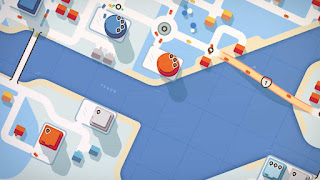Practical vs Ideal & Building Traffic Lights
You’re a team member of a construction company and you’re tasked with solving a discomfort for commuters at a three-way intersection. It’s a moderately busy street with pedestrians, cyclists, cars, and trucks all crossing by, and the way the traffic lights are configured result in everyone waiting far longer than they ideally should.
Now the situation is in no immediate need of fixing - it’s a mild discomfort, but the people accept it for what it is. However, the city is growing and your team knows this intersection might be a cause for concern in the future.
What do you do? Well, there are two approaches to solve the problem at hand.
In the first approach, you would:
In the second approach, you would:
Now the situation is in no immediate need of fixing - it’s a mild discomfort, but the people accept it for what it is. However, the city is growing and your team knows this intersection might be a cause for concern in the future.
(Side Note: Mini Motorways is just such an aesthetically pleasing game!)
What do you do? Well, there are two approaches to solve the problem at hand.
- You modify the current traffic lights configuration with the caveat that the road will be in need of change once the city grows.
- You make an extensive, elaborate plan to understand what the future potentially holds, and preemptively fix the situation before it ever possibly arises.
In the first approach, you would:
- Collect data on the current traffic load,
- Simulate potential solutions by modifying the existing traffic light configurations,
- Choose one that meets the current demands.
- Make a note that this will need rethinking if the city grows.
In the second approach, you would:
- Collect data on the current and past traffic load,
- Speak with city officials for planned housing and road extensions in the region,
- Consider the various minority groups, ie the number and velocity data for differently-abled citizens, old age citizens,
- Consider weather maps and water drainage systems to beware of future water clogging in case of floods,
- Consider light and sound pollution with the various solutions you propose,
- List out your potential solutions, simulate a few that seems reasonable,
- Finally build out the solution well in advance before the intersection has the need for your solution.
The approach you choose depends on time, cost, available resources, frequency of the problem, severity of the problem, reversibility of the solution.
The fun thing about life is, there is no right approach. Any chosen solution is a tradeoff. One can merely builds frameworks, but every problem you solve is a case by case basis. And the choice of approach is your preference, and the consequences of the choice you can live with.
-
My preference: There’s an ideal solution, and there’s a practical solution. Having worked in startups before this job, I prefer working in a fast-paced fail-fast approach. There’s a very hard to achieve balance between the two approaches.
The fun thing about life is, there is no right approach. Any chosen solution is a tradeoff. One can merely builds frameworks, but every problem you solve is a case by case basis. And the choice of approach is your preference, and the consequences of the choice you can live with.
-
My preference: There’s an ideal solution, and there’s a practical solution. Having worked in startups before this job, I prefer working in a fast-paced fail-fast approach. There’s a very hard to achieve balance between the two approaches.
My choice is: an iterative solution, with extensive thoughts spent on considering the ideal solution. Do an extensive discovery round, but solve it through iteration. You never know what the future holds, and planning too far ahead isn’t helpful - you’re likely never going to run into the issue you think you will.


Comments
Post a Comment